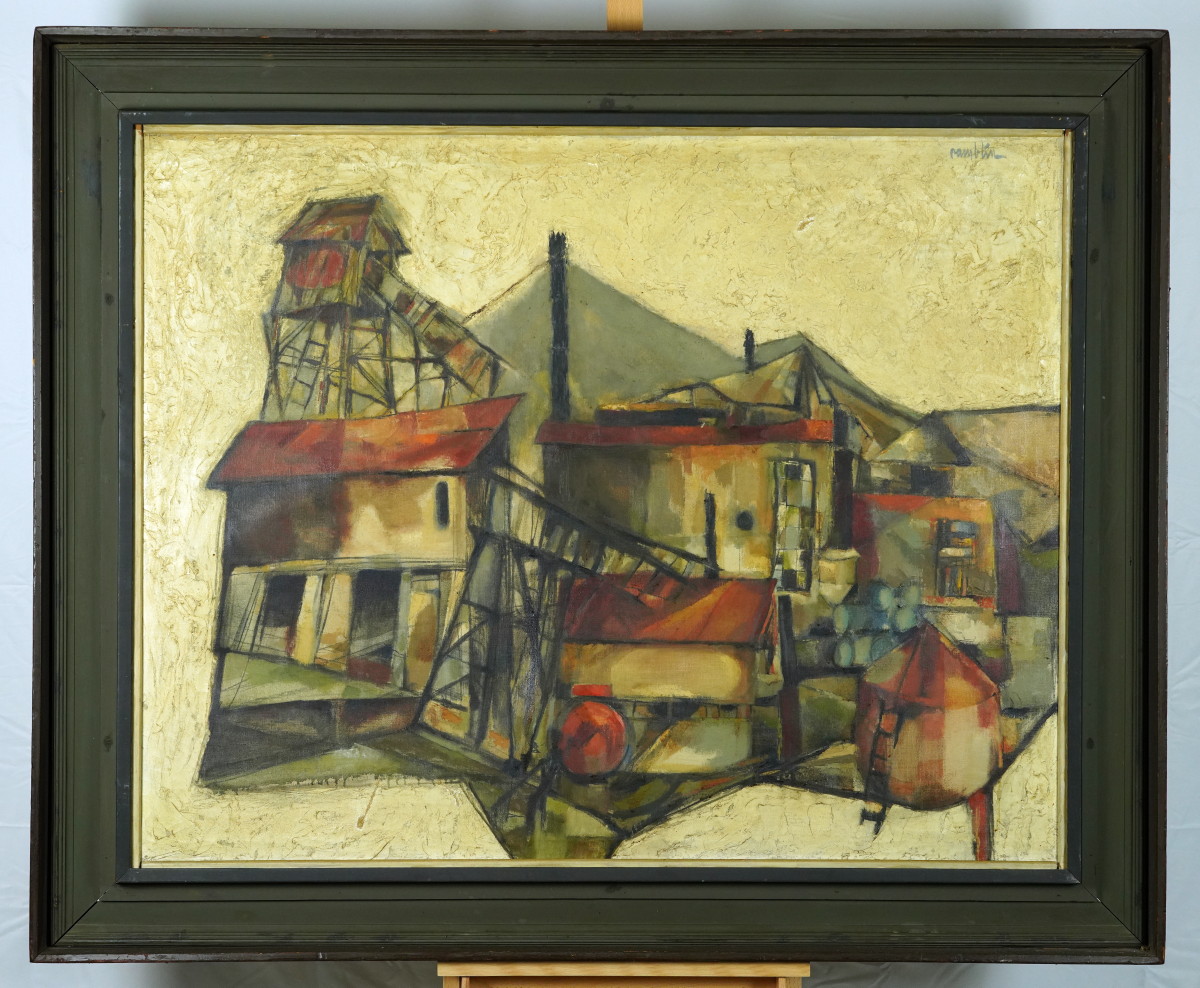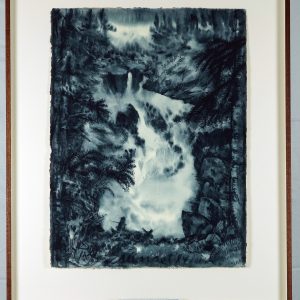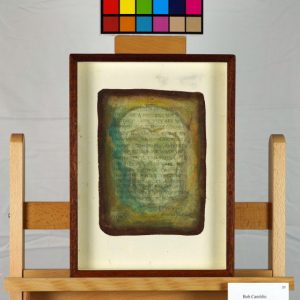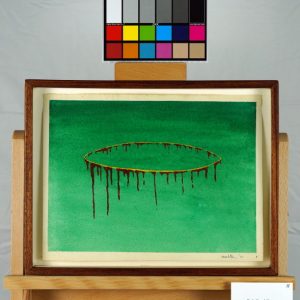Description
roma, c. 1950s
Acrylic on board
Signed
37.25 x 47.25 in. (image)
47.75 x 57.5 in. (frame)
original, includes certificate of authenticity from ArtTrust
The painting “Roma” features a collection of abstractly rendered buildings and structures, possibly depicting an industrial or mining site. The scene includes elements like towers, sheds, and various geometric forms. The color palette is dominated by earthy tones such as browns, reds, and beiges, suggesting the aged and weathered nature of the structures.
In Zen philosophy, the transitory nature of life and the impermanence of material things are often emphasized. This artwork’s depiction of aging and decaying structures may reflect the passage of time and the inevitability of decay. The chaotic arrangement of the buildings could symbolize the inherent disorder in the physical world, while the balanced use of space could represent the pursuit of harmony amid chaos.
From the I Ching perspective, this artwork could be associated with the Hexagram “Keeping Still” (Gen). The hexagram signifies the need for stillness and introspection, qualities that could be evoked by the scene’s depiction of an abandoned or quiet industrial site. The structures could symbolize the old ways and past efforts, inviting a contemplation of legacy and transformation.
Bringing together Zen and I Ching interpretations, the artwork might evoke a sense of meditation on the past and the ever-present nature of change. The industrial setting, once a place of activity and human effort, now stands as a silent witness to the passage of time, reflecting the cycles of creation, decline, and renewal. The artist may be inviting the viewer to ponder their relationship with the physical world and the enduring legacy of human endeavors.
Stylistically, this painting echoes elements of early 20th-century movements such as Cubism or Post-Impressionism, with its fragmented forms and abstracted depiction of a real-world setting. The use of geometric shapes to build the scene might draw inspiration from artists like Georges Braque or Lyonel Feininger, who explored architectural forms in their work. The choice of an industrial subject matter could also connect to the Precisionist movement, which celebrated the structures of modernity.
The artwork’s layered meanings invite the viewer to explore themes of time, change, and the beauty found in decay.
*Shipping cost will vary, please inquire at sales@camblingallery.com before purchasing.
Currently ships from Oregon, USA
Member of artnet? Apply for a discount! Inquire about intergallery and permanent loans for museums..
Reproductions of this drawing are available in multiple sizes!
Click here to use our high-resolution viewer!
This artwork is available with a non-fungible token to ensure traceability and transparency of provenance.
The royalty factor – Unlike traditional artworks, such as paintings, mosaics, statues, and the like, NFTs can be programmed to provide royalties to you every time the painting (and token) is sold and resold – for eternity. That mind-bending Camblin you sold could be worth millions one day and provide income for your great-great-great grandkids!
Anti-forgery – The central idea underpinning NFTs is that they are built on the blockchain, which is meant to offer advanced security. Think of it like an un-erasable and un-avoidable copyright.
Easy authentication – Another compelling aspect of NFT art and NFTs in general is the ability to quickly and easily authenticate items, as the record of ownership is scrupulously kept on the blockchain.




